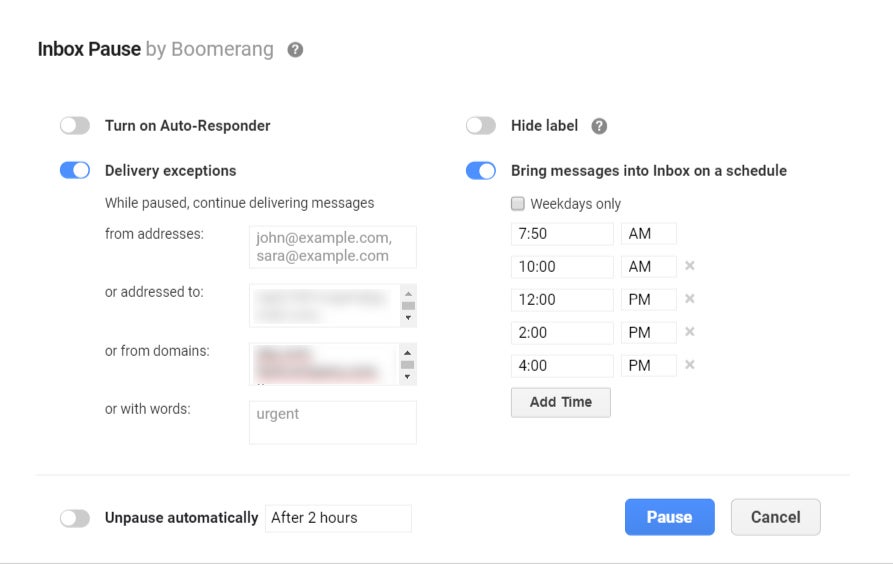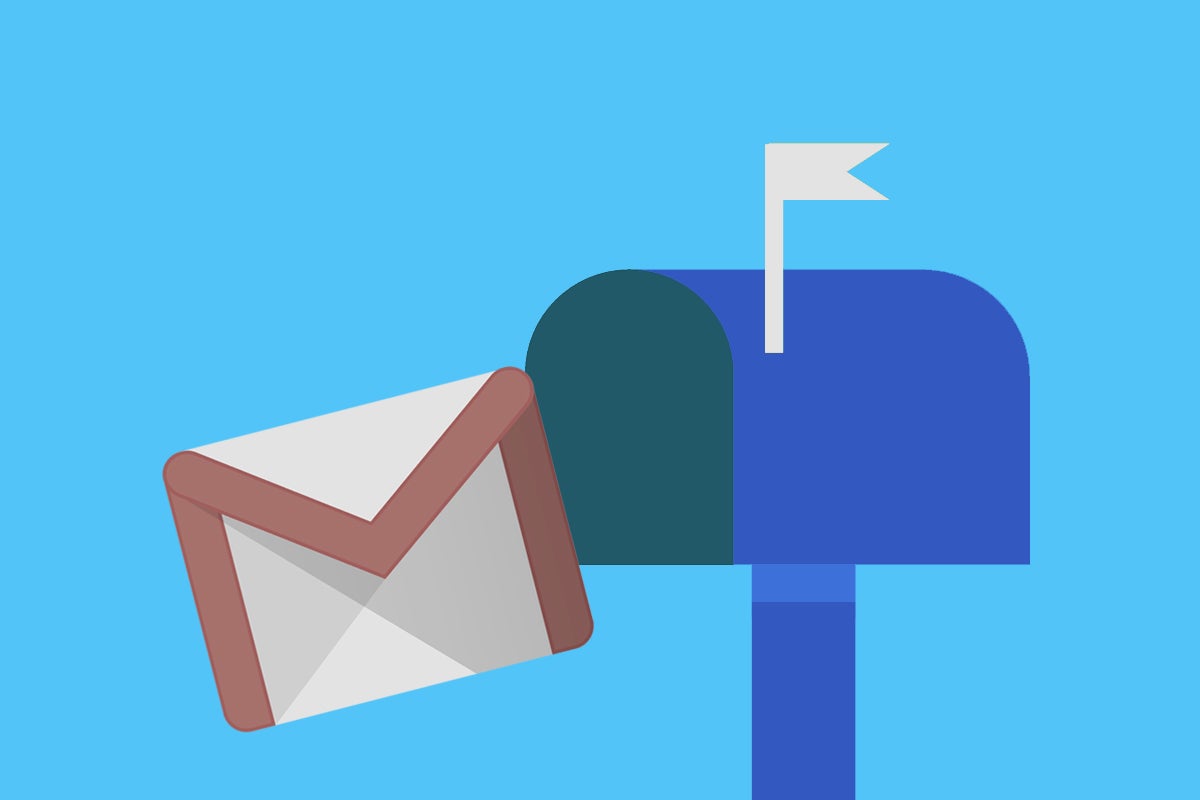Hard to believe, but it was just this past year that Google pulled the plug on its once-promising Inbox service.
And you know what? While Inbox itself may be nothing more than a memory at this point, I'm still constantly thinking about ways to make my current inbox — the one that exists within Gmail — more organized and efficient. And more often than not, that involves coming up with crafty workarounds to bring Inbox-like elements back from the dead and into that environment.
I've talked before about how I still save links and reminders into my inbox — two core Inbox-esque elements that I recreated within Gmail and now use almost every day. On the desktop front, meanwhile, a series of interface adjustments and an invaluable extension made by a former Google designer go a long way in enhancing my email adventures and allowing me to retain at least a little bit of sanity whilst staring at message after incoming message.
But for all the progress I've made and all the tricks I've tried, there's one bit of Inbox magic I've never been able to resurrect — and that's the Bundles system Inbox used to make actual email delivery more manageable.
Bundles, if you don't recall, served two primary purposes: First, it organized your messages into categories of sorts and then presented similar emails together in clusters within your main inbox view. You can kind of recreate that part, to a degree, by using Gmail's tabbed inbox option and then little by little customizing which types of messages get routed into which tabs. It's by no means the same as Bundles in terms of scope, presentation, or customization — but it's vaguely in the same ballpark, at least, when it comes to the core concept.
Then, however, there's the second part of what Bundles provided, and that's where things get especially tricky. In Google's Inbox service, y'see, Bundles would let you choose to receive certain types of messages only once a day or once a week, even — with the idea that when it comes to things like bills or low-priority updates, you don't need to be distracted and bothered every single time a new message trickles in. Instead, you can more efficiently deal with all such messages in one fell swoop by having them show up together only at certain specified times.
That's the part of Bundles that was especially innovative and different, and that's the part I've been longing for all this time.
Well, I've been trying out something in my Gmail inbox lately, and it's the closest I've come to regaining that Bundles-reminiscent batch-delivery power.
The feature comes via a third-party Gmail add-on called Boomerang. If that sounds familiar, it should: I wrote about the service this past summer, specifically talking about how I'd become enamored with its supercharged snoozing setup (which gives you the handy option to snooze a message and then have it return only if you haven't received a response after a set number of days — sensible, no?).
Boomerang has another feature called Inbox Pause, and while its name might, erm, give you pause, it actually has the potential to be incredibly useful and Bundles-like in nature.
Here's how it works:
- Once you've signed up for Boomerang and installed its desktop browser extension, you click a special button within Gmail to "pause" your inbox.
- That pulls up a configuration box where you can specify when exactly you want messages to be delivered, with as many different times of day as you need.
- The box has another option where you can specify delivery exceptions, and that part is the key to making this work the way we want. There, you can tell Boomerang to let certain types of messages through as they arrive — messages from specific addresses or domains, messages addressed to specific addresses, or messages with specific words in their subjects or bodies.
 JR
JR So it basically gives you a backwards way to set up a Bundles-like periodic delivery system — Bundles unbundled, I guess you could say: Instead of configuring your low-priority messages to show up only at certain times, you configure everything to show up only at certain times. And then you specify your high-priority exceptions.
Maybe, for instance, you always want emails from anyone within your company to show up immediately. Maybe you want to include emails from your family in that instant-delivery list as well. Maybe you want to whitelist emails with the word "urgent" or emails sent to a specific subaddress like yourname+urgent@gmail.com (you do know about that little trick, right?). Or maybe you want only emails from your Gmail Primary tab to come through as they arrive. (The trick there, as I learned shortly after this column's publication, is to put "category:primary" into the delivery exceptions box.)
Whatever the case, once you've added in all of your high-priority, instant-delivery-worthy scenarios, you can have everything else show up only once a day, four times a day, or even once an hour, depending on what seems appropriate for your own situation. No matter how you set it up, you'll be setting yourself up to deal with less urgent messages in a more batch-like and efficient manner. And though the initial setup has to happen on the desktop front, once Inbox Pause is on, the result will be the same anywhere you access Gmail — via the web on your computer, via the app on your phone, or anywhere in between.
"But what if I miss something truly important?" you might wonder. It's a valid question — and one that was always present with Bundles in Inbox as well. The beauty of this particular arrangement, though, is that you can completely customize not only the types of messages that get through instantly but also the times at which everything else arrives.
So if you think you might get something vaguely important but unpredictable — say, an email from a prospective new client whose name you don't know — you could tell Boomerang to bring all of your messages in at the top of every hour during your workday. Triaging your messages in bulk once an hour will still be immeasurably more efficient and less disruptive to your day than dealing with every single individual email as it arrives, and yet the hourly delivery arrangement means you'll never go particularly long without seeing anything. The balance is totally up to you.
Now, for the catch: This feature, in all of its glory, isn't free. And it isn't exactly cheap, either: After a one-month trial, Boomerang charges you 15 bucks a month — or $12.50 a month, if you pay for a full year in advance — for its Pro plan, which unlocks the critical abilities to specify high-priority exceptions and to create your own custom delivery schedule. Only you can decide if it's actually worth that cost, but when you think about it as a premium email app — one that just happens to exist within Gmail instead of being its own standalone entity — well, the price doesn't seem quite as extraordinary.
(The Pro plan also gives you unlimited super-snoozing along with a handful of other advanced features, including the ability to leave yourself a private note that'll come back up when a snoozed message returns to your inbox — another Inbox-reminiscent element that I've missed since that service's demise.)
Oh, and if you're worried about Boomerang's ability to access your private email data — which is absolutely something you should think about! — well, what we can say is that the service has been around since 2010, has 1.5 million users on Chrome (and another 265,000-plus in the G Suite Marketplace), and has average ratings between four and five stars, depending on where you look. The service does require full access to your Gmail account — invariably, given the nature of what it does — but its privacy policy and FAQ page make it clear as day that the company stores only the headers of messages for emails you process with it and never shares or sells any sort of personal data.
Allowing a third-party app to access any part of your Google account isn't something you should do lightly, but this specific service certainly seems trustworthy from the outside. And considering the clever and effective way Boomerang brings Bundles-like batch delivery back into Google's email universe, it might be just the missing piece you need.
Sign up for my weekly newsletter to get more practical tips, personal recommendations, and plain-English perspective on the news that matters.

[Android Intelligence videos at Computerworld]






